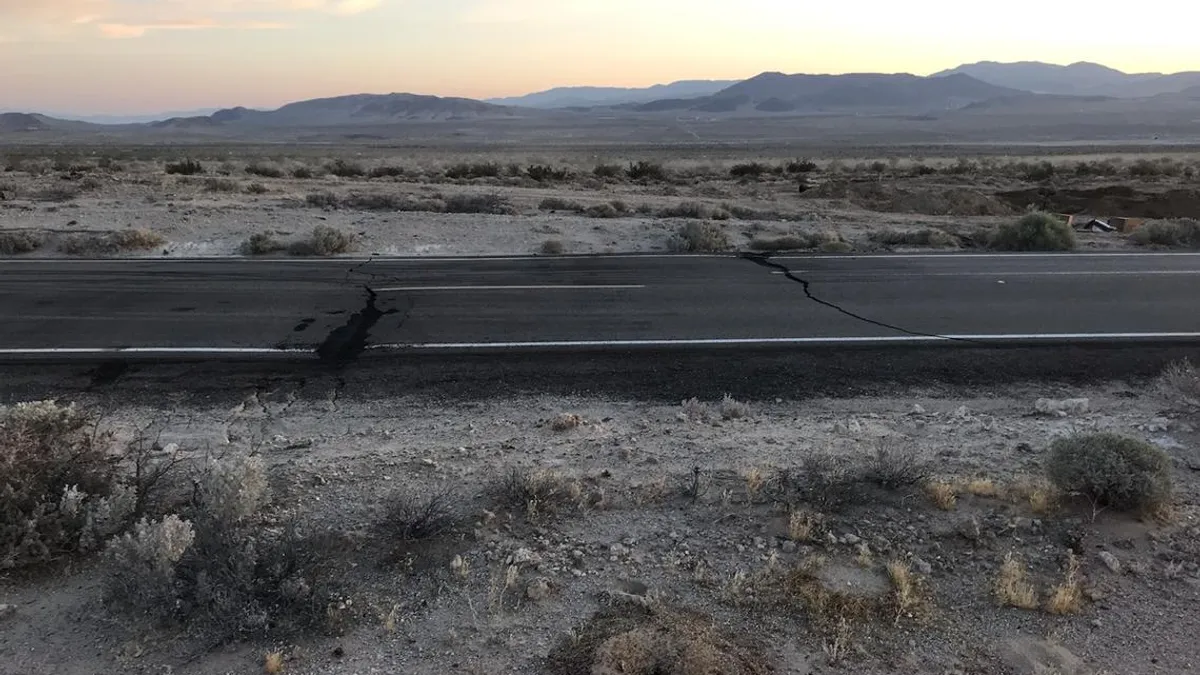Dive Brief:
-
After a 13-day, 3,600-building, multi-team assessment following the July 4 and July 5 earthquakes near Ridgecrest, California, the Naval Facilities Engineering Command Southwest (NAVFAC SW) estimates that it will take approximately $5.2 billion to repair all of the damage at the Naval Air Weapons Station in China Lake, California. The total estimated value of the damage to buildings alone is $2.2 billion.
-
The scope of work includes repairs and upgrades necessary to bring the facility up to its pre-earthquake functionality with the addition of necessary seismic and Antiterrorism & Force Protection improvements required by the Defense Department.
-
The assessment found that there are more than 1,000 Naval Air Systems Command buildings with $1.7 billion in damage; almost 270 Commander, Navy Installations Command facilities with $379 million of damage; 96 NAVFAC buildings with $57 million of damage; and nine other buildings with $21 million of damage. The NAVFAC SW plans to have all work awarded in fiscal years 2019 and 2020.
Dive Insight:
In fiscal year 2019, priority projects awarded will include repairs of $50,000 or more; roads; temporary facilities; and unsafe or restricted facilities with "high mission dependency." In fiscal 2020, projects involving repairs costing less than $50,000; replacement facilities; deliberate utility repairs; and new discoveries will be awarded.
All of this information was presented to a gathering of potential bidders on Aug. 1 in San Diego, and NAVFAC SW asked construction industry attendees in return to provide feedback on the potential costs and logistics of having to deal with limited resources — i.e. personnel and housing — in the area; trying to meet an accelerated schedule; ensuring high quality and safety; and partnering for such a large project. Navy officials also asked potential contractors about any rules or regulations that might interfere with their bidding or execution of the work.
During the Q&A session, NAVFAC SW received considerable feedback from contractors in attendance. Some of their suggestions were to reduce the small business requirements since larger contractors are more likely to have the in-house resources to complete the work on schedule; to establish a separate credential and security post for construction crews; and that project officials might want to lessen the stringent degree and/or experience requirements for quality control managers and site safety and health officers like the Army Corps of Engineers has done.
NAVFAC SW officials said that the majority of replacement work contracted out will be design-build versus design-bid-build because they don't have time to perform design work.
The approximately 100 contractors represented at the meeting included AECOM, Bechtel, WSP USA, Fluor, Gilbane and HDR.
Congress still must approve funding for the project.












